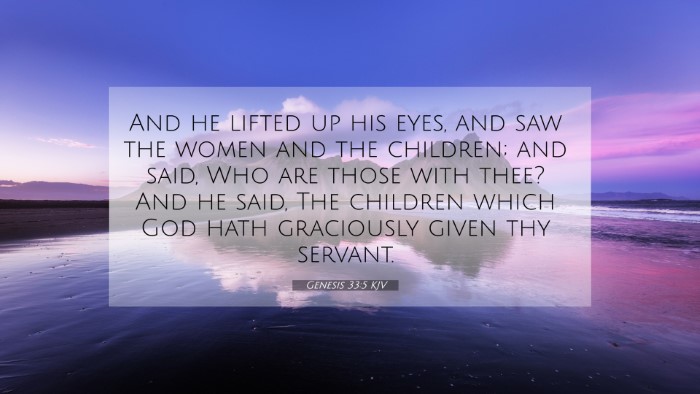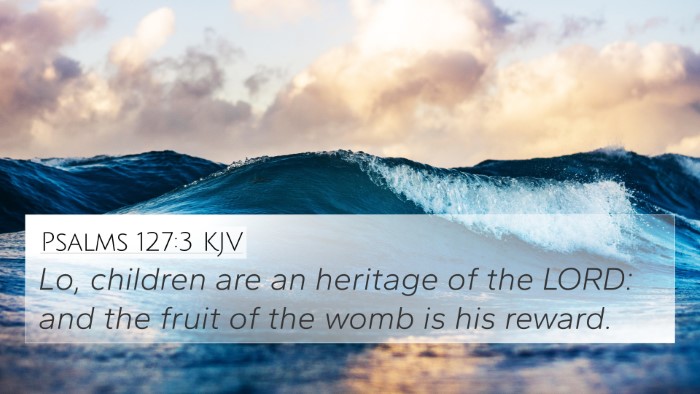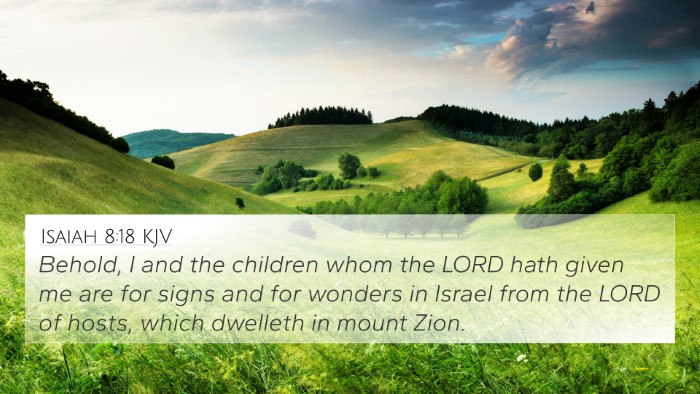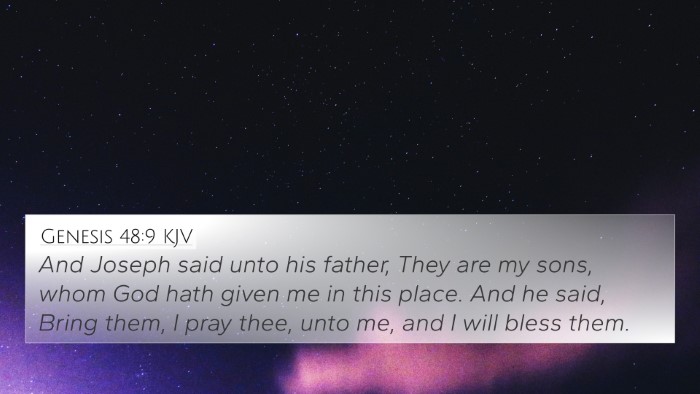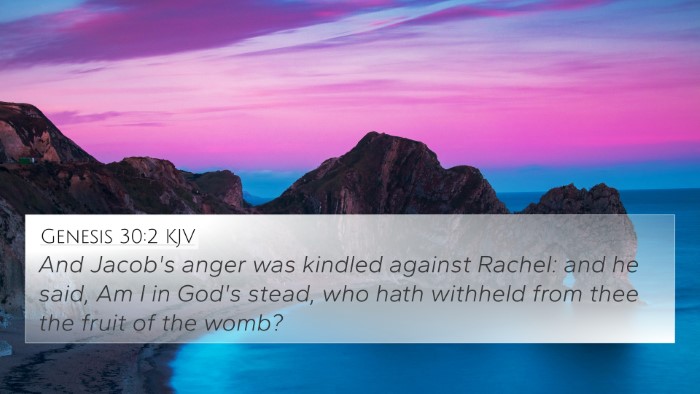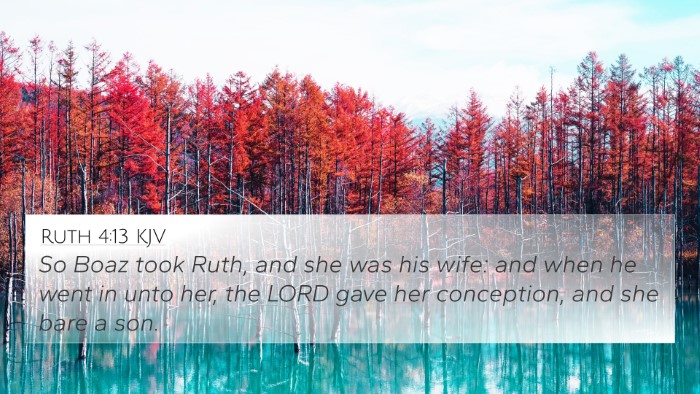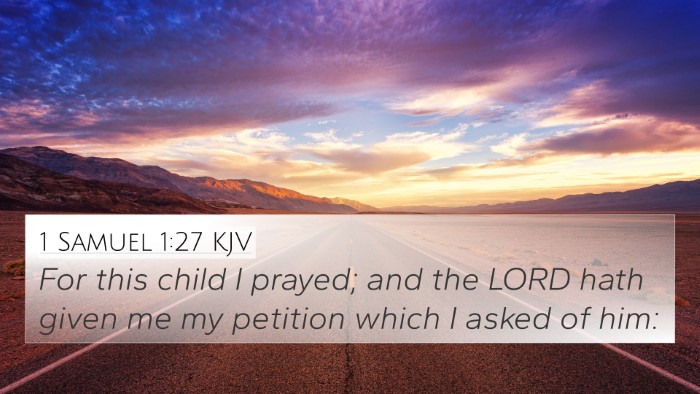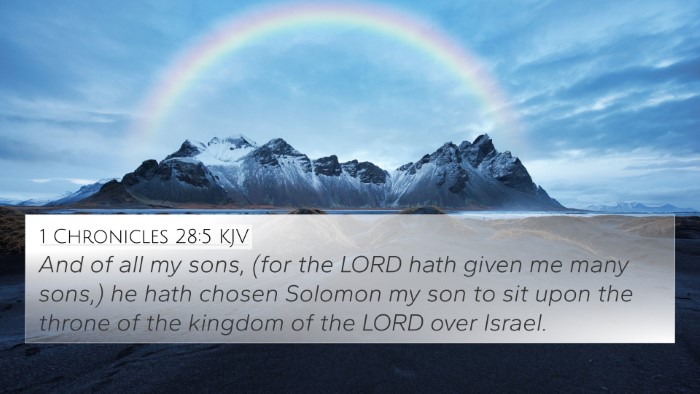Understanding Genesis 33:5
Genesis 33:5 states, "And he lifted up his eyes, and saw the women and the children; and said, Who are those with thee? And he said, The children which God hath graciously given thy servant."
Summary of Interpretation
The verse provides a poignant moment of reunion between Jacob and Esau, highlighting themes of reconciliation, family, and the blessings of God. This interaction is rich with emotional and spiritual dimensions, encapsulating the biblical narrative's focus on God's covenantal blessings and the transformative power of forgiveness.
Thematic Overview
- Reconciliation: Jacob and Esau's encounter illustrates the healing of past wounds and the restoration of relationships.
- Family: The introduction of Jacob's family underscores the importance of lineage and legacy in biblical contexts.
- Divine Grace: Jacob attributes his children as a gift from God, emphasizing the theme of divine provision.
Commentary Insights
The following insights combine perspectives from notable public domain commentaries:
- Matthew Henry: Henry emphasizes the transformation in Jacob’s heart and character, noting how God's grace led him to peace with Esau. He highlights the importance of humility in approaching others, particularly those we may have wronged.
- Albert Barnes: Barnes points out the significance of Jacob's acknowledgment of the “children which God hath graciously given.” This reflects not just familial pride but gratitude towards God for His blessings, indicating that every good gift comes from the Father.
- Adam Clarke: Clarke elaborates on the question posed by Esau, suggesting it signifies interest and concern rather than mere curiosity. The gathering of family symbolizes the unity that can come after strife.
Cross-References
To understand the breadth of this verse, it is helpful to look at the following Bible verse cross-references:
- Genesis 32:10: Jacob reflects on his unworthiness and the blessing he has received, illustrating his growth and transformation.
- Romans 12:18: A reminder to pursue peace, which resonates with Jacob’s act of humility towards Esau.
- Hebrews 11:20: The mention of faith in regards to Jacob's lineage reinforces the legacy he is presenting before Esau.
- Psalms 127:3: The children are described as heritage from the Lord, affirming Jacob’s statement about God’s gifts.
- Matthew 5:9: The beatitude about peacemakers ties in the notion of reconciliation displayed in this chapter.
- Luke 2:14: The themes of peace and goodwill align with Jacob's desire for harmony with Esau.
- James 1:17: This affirms the belief that every good gift, including children, comes from God, which Jacob wholeheartedly acknowledges.
The Importance of Cross-Referencing
Understanding the connections between Bible verses can deepen your appreciation of scripture. Utilizing tools for Bible cross-referencing can enhance your study:
- Using a Bible concordance to locate themes and references effectively.
- Adopting a systematic Bible cross-reference guide for more comprehensive studies.
- Engaging in cross-reference Bible study methods to draw connections between Old and New Testaments.
Conclusion
Genesis 33:5 serves as a powerful testament to the redemptive narratives found throughout the Bible. By understanding the themes of reconciliation, family, and divine grace, one can better appreciate the interconnectedness of scriptural teachings and the overall message of God's love and forgiveness. As you explore the connections between Bible verses, consider how the themes presented in this verse resonate in the larger biblical narrative.


